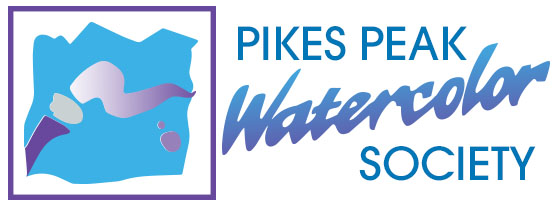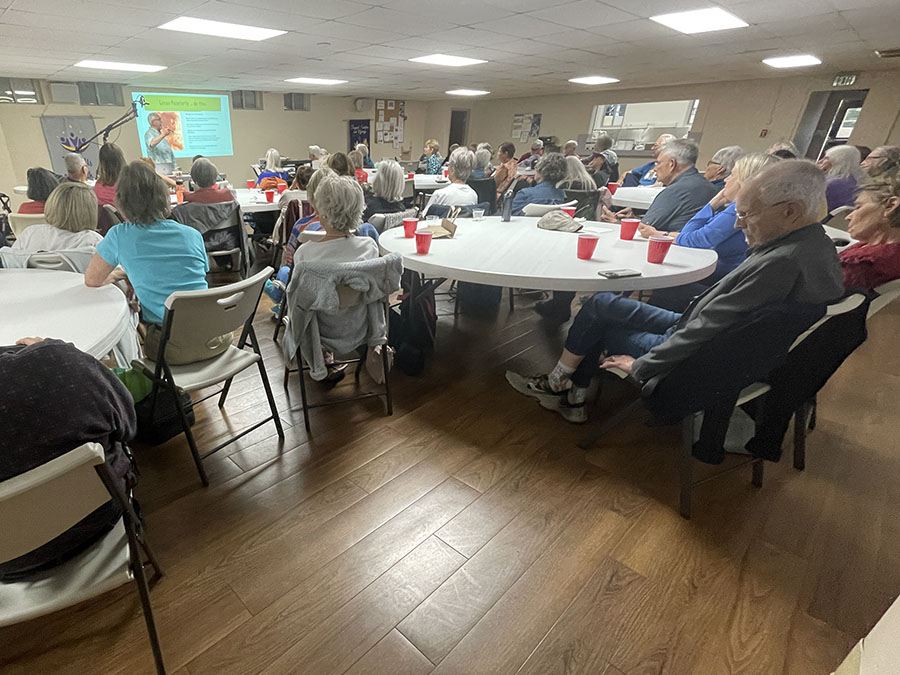Local artist and teacher Steve Busamante was our guest speaker and we had a packed house! Steve has been painting for 45 years and currently holds summer watercolor classes at the Westside Community Center in Old Colorado City. Many of Steve’s students attended the meeting.
Steve was a fun and lively character and presented us first with a slide show about the Art of Teaching Art. It was extremely informative presentation and he brought up many good points.
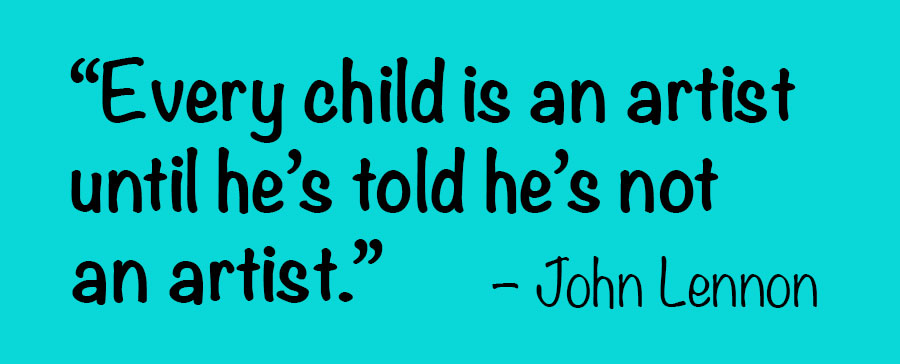
A few key points for Realism painting:
• Consider having specific palettes: nocturnal, ocean, landscape, portrait, nocturnal.
• Sketch with your paintbrush using a pale color. Do not pencil in your subject then paint within the lines.
• It’s critical to use gray. Think in terms of Tint, Tone and Shade.
• Have a strong game plan. More upfront planning before laying paint to paper: thumbnails, sketches, value map and aerial perspective zones.
• Celebrate advancements!
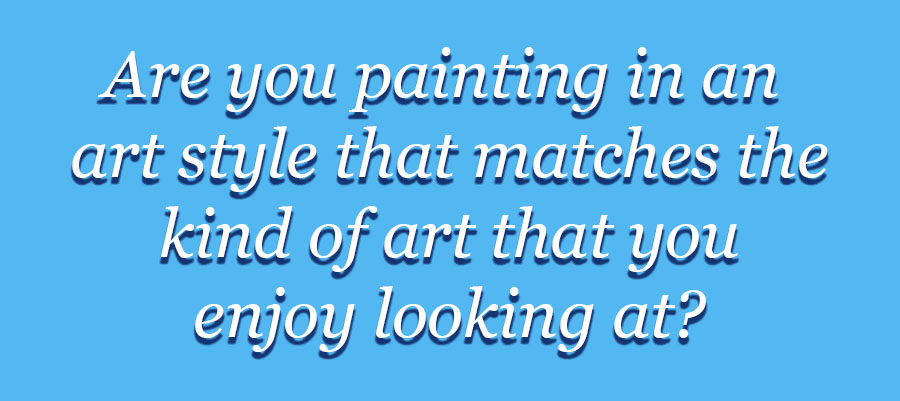
Indirect Painters have more of a planned approach to painting.
• Layer washes keeping stacked layers to four or fewer layers.
• Generally speaking this style tends to attract painters who are a bit slower when compared to Direct Painters.
• Isolated objects rarely exist. Painted objects share commonalities.
Loose Painterly Style:
• Simplify your color palette.
• Sketch with your paint brush
• Think in terms of mark making, not just brush strokes.
• Loose Painters take more risks which means there are more failures in the beginning.
• Remember, watercolor is like golf. The fewer strokes win the game!
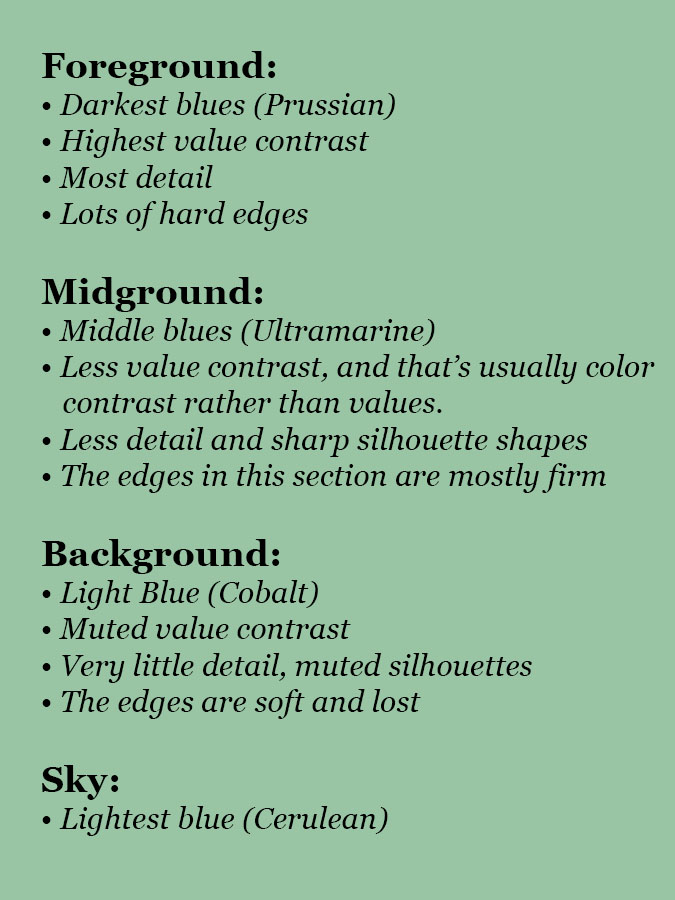
Steve also explained the different sections of a painting, see above.
He also stressed knowing how your paper reacts to different conditions:
• Wet, good for backgrounds
• Damp, good for the middle ground
• Dry, which is good for the foreground and detail.
He also explained how the human eye, compared to a camera, can see 24 stops of light difference and how the further away something is the color changes. An example he used was that we all know the dirt at the top of Pikes Peak is brown or reddish, but from a distance the peak looks blue or purple.
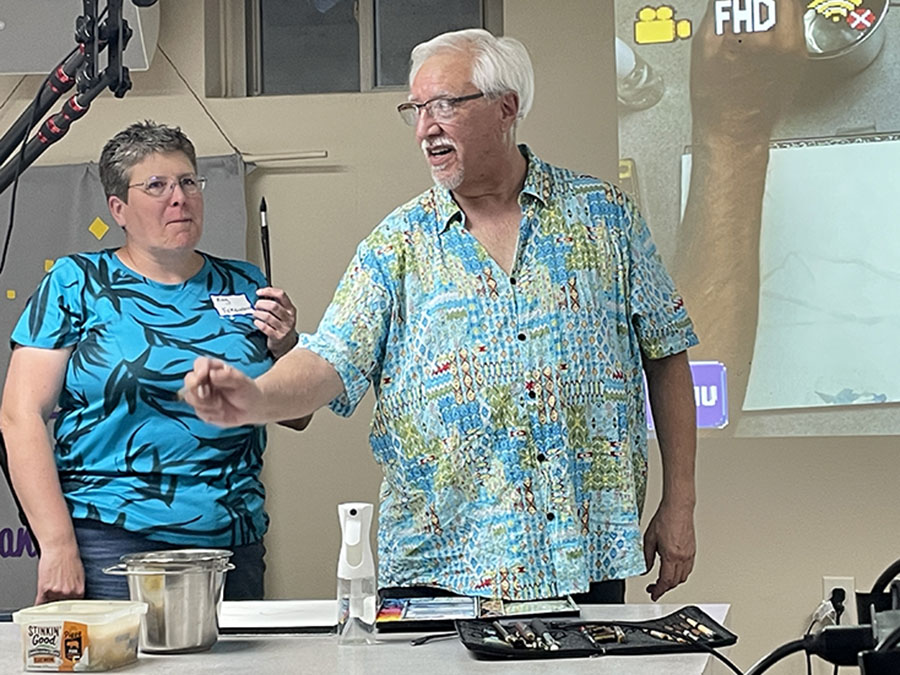
It was now time for our demonstration!
Member Amy Ferguson was our brave volunteer to paint a picture using mark making and Steve’s two brush system. Amy was a bit perplexed when she was only given one brush!
The two brush system was paining with one brush, then softening the edges and blending it out with another brush loaded with just water.
There was much banter and joking between Amy and Steve during this demonstration. Unfortunately, before the demonstration was done, the viewing camera battery died and the demonstration came to an early end.
